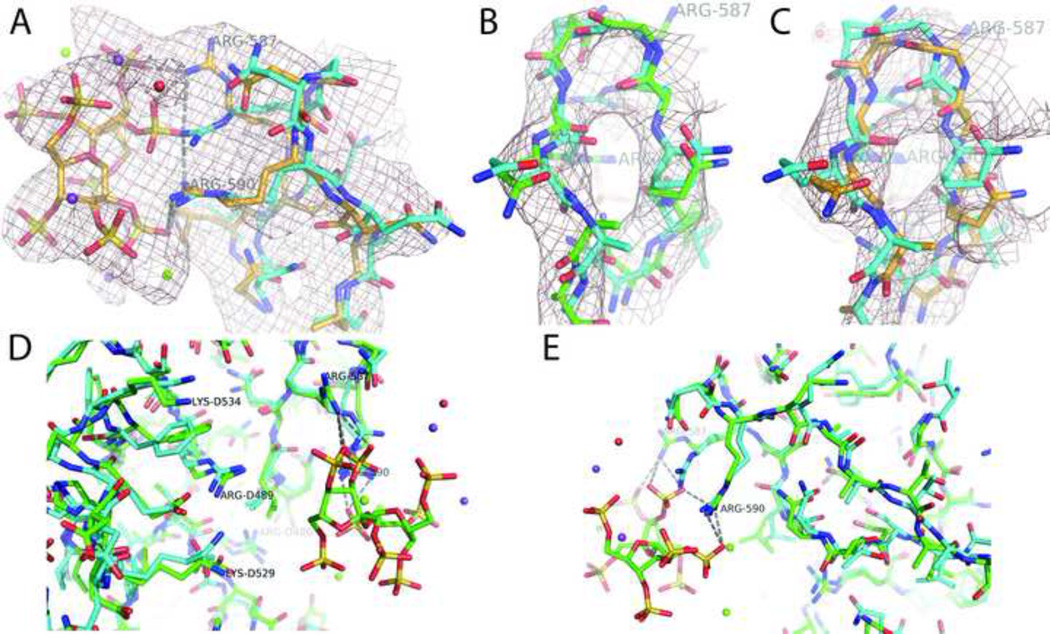Figure 2.
Local changes induced by SOS-binding. The largest conformational changes are in the SOS-proximal loop containing residues 584 – 592. A: The “high order” ρΔ difference map is designed to show just the bound conformation, with contributions from unbound virus subtracted (Smith et al., 1986). Equal strength density for ligand and protein (contoured at 4.5 σ) indicates that the estimated occupancy is approximately correct. The model of the complex (gold carbons), refined against this map, shows a maximal backbone displacement of 2.1 Å, relative to the SOS-free AAV-2 crystal structure (cyan carbons) (Xie et al., 2002). B: Density for the initial reconstruction (ρAAV+SOS contoured at 9σ to show backbone) appears to have a stronger signal-to-noise ratio than the ρΔ difference map, but corresponds to a mixture of bound and unbound forms. Nevertheless, the model with green carbons that was refined against this map shows much of the induced change when compared to the SOS-free AAV-2 structure (cyan carbons). C: The ρΔ difference map of panel A is shown in the same orientation as the ρAAV+SOS reconstruction in B. The difference map, contoured at 6 σ, is noisier, but clearly shows change away from the SOS-free AAV-2 structure (cyan carbons). Noting that ρΔ should show only the bound configuration, the model (gold carbons) refined against this map shows displacements that are slightly greater, but mostly in the same direction as those refined against the ρAAV+SOS reconstruction of panel B (green carbons).
D & E: orthogonal views of the binding site environment, comparing the refined EM-based structure of the SOS complex (green carbons) to the homology model built from the SOS-free crystal structures of the parental strains (cyan carbons). Changes are modest, even close to the ligand, and are smaller farther away. Much of the overall RMS difference of 1.4 Å can be attributed to experimental error at 4.8 Å resolution. It is therefore concluded that conformational changes are not propagated away from the binding site. Residues from a 3-fold related neighbor are numbered with the preface “D”.

